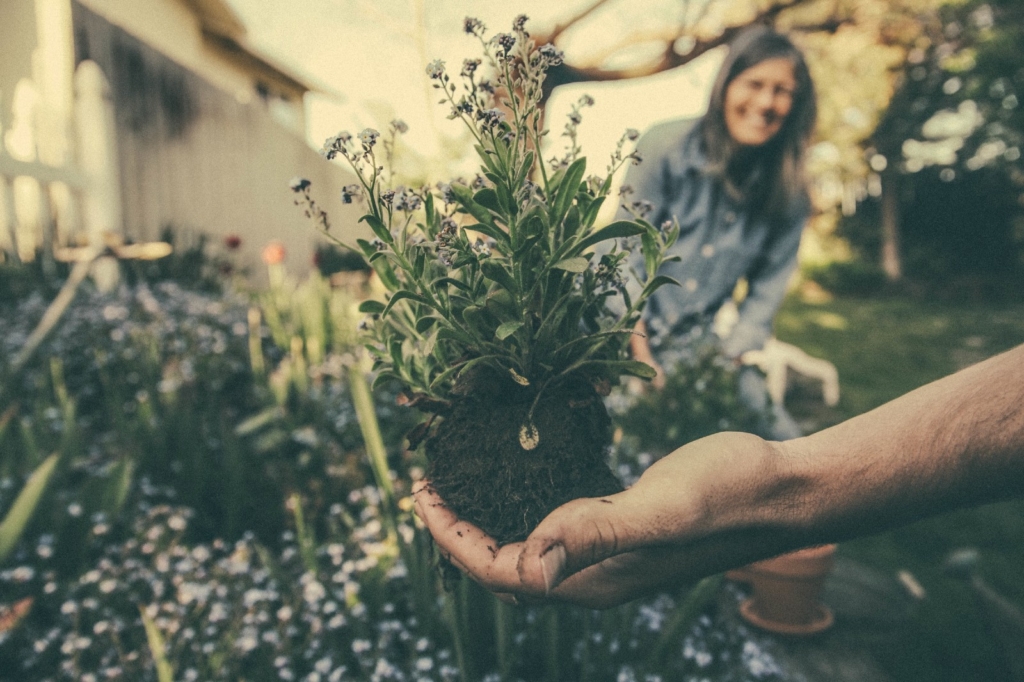As wildlife continues to lose habitat due to human settlement, precious fauna and flora are being displaced with nowhere to go. You can return some of what has been taken by turning your backyard into a natural habitat for local wildlife.
Size Doesn’t Matter
You don’t have to have a huge backyard to make it wildlife friendly. You can attract birds, bees, butterflies and mammals by planting flowers in a window box or a selection of plants on your porch. As long as you plant native species, you will attract local wildlife.

Go Native
You will need to do some research on native trees, plants, and flowers that occur naturally in the wild where you live. Native flora provides food and shelter for wildlife and is better suited to the climate and soil.
When planting, the key is to create multilayer trees and shrubs in proximity to one another. This resembles a natural habitat and provides both food and shelter.
Let There Be Water
Make sure there is a water source such a raised bird bath or groundwater such as a pond for fish, frogs and other wildlife.

Protect The Birds
The most significant threat to birds in your backyard is cats, particularly in areas where native birds are not accustomed to predators in their natural environment. Cats are responsible for killing plenty of native birds so if you have a cat, make sure you put a bell around its neck and lock it indoors at night.
You can encourage the presence of birds by hanging bird boxes in your trees to nest in. Make sure you do your research on what type of bird, prefers what type of nest.

Help Pollinators
You need a combination of perennials planted in groups to offer the most significant opportunity for pollination. Natives that bloom at different times of the year provide food for the longest period and bright coloured flowers usually produce nectar year round.
Window boxes are a great idea for attracting butterflies. Flowering plants attract winged insects, and many butterflies will lay their eggs in the leaves which are a source of food for caterpillars.
Bees are perhaps some of the most important pollinators in an ecosystem with 25% of everything we eat and drink coming from bees.

Keep it Grassy
Consider native grasses instead of turf, they serve seed, provide shelter and are low maintenance.
Celebrate Bugs
The praying mantis, for example, eats evil insects such as aphids. A healthy ecosystem incudes pest free habitat and juicy bugs for birds to enjoy!
Go Organic
Organic gardening is a great way to grow your food without the nasty human-made chemicals. It is also much more wildlife friendly as it does not disrupt the natural balance of the ecosystem.

Keep it Leafy
Don’t get rid of your leaves! They form critical habitat for wildlife including butterflies, reptiles, insects, and worms as well as mulch on garden beds to retain moisture and reduce watering needs.
Be Sustainable
Think about ways you can garden more sustainably. You could rake instead of using a leaf blower; push a manual lawnmower instead of an electric one; trim your weeds with clippers as well as use a stiff-bristled broom instead of water and soap.

Plant a Rain Garden
Create a garden that is designed to absorb rainwater runoff from rooves, driveways, and walkways rather than allowing it to run off into drains and eventually end up in the sea. Your rain garden should be designed specifically for the soil and climate to ensure water is absorbed into the ground were it is available for plants. These gardens reduce pollution in creeks and streams by up to 30%.
Native plants are best as they are more tolerant of climate and soil and have deep root systems for enhanced water filtration. Wildflowers, rushes, ferns, shrubs and small trees are recommended.

Start Composting
Composting is a great way to put nutrients back into your soil while at the same time reducing food waste and improving the soil’s water retention. Once you start composting you wont believe how little trash you are producing!
Plant Trees
Reduce your carbon debt by planting trees! Trees are essential for wildlife shelter and food. Select trees that grow fruit or nuts to provide food for birds and insects. Enjoy the shade they create in summer as well as shelter in winter.

Sources:
http://www.globalstewards.org/ecotips.htm
http://eartheasy.com/play_bkyd_wildhab.htm
https://www.bhg.com/gardening/design/nature-lovers/create-a-backyard-wildlife-habitat/?slideId=9ad6e2bc-a12d-49e7-a8fc-39eccd243428
